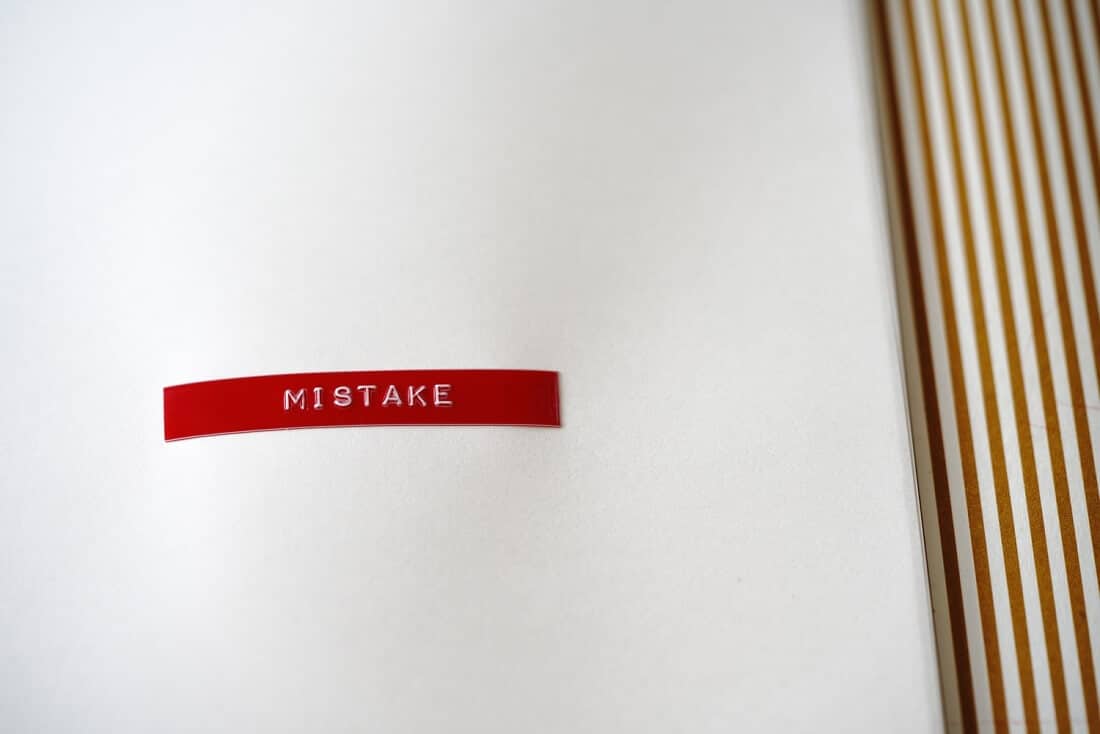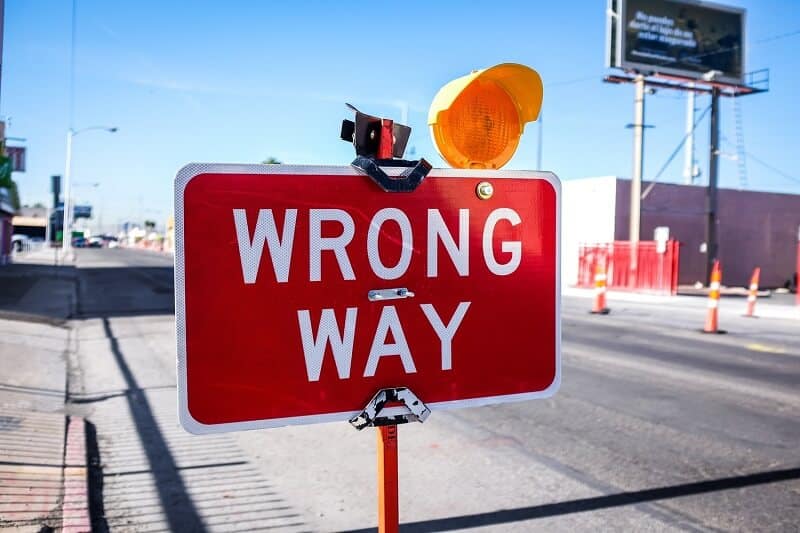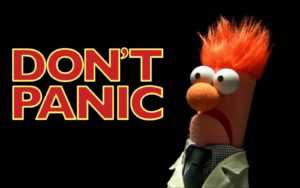
The first and most important lesson in trading stocks is damage control. One of the methods is by cutting losses.
By Guy Avtalyon
This is the essence of trading – how to cut losses immediately. You have to learn this because it is something commonly named as damage control. And if you are not ready for the worst-case scenario and you get panicked, your losses in trading stocks can be enormous. One single bad move can destroy your trading account.
Not all trades will be winning, so you have to know how to cut losses in trading stocks.
First and principal, you’ll need a good trading plan. The best plan is to exit a losing position and cut losses when the trade doesn’t match your plan. So, the trading plan is mandatory.
Every single trader in the world has had or still has losing trades. That isn’t a problem. The main problem is how to cut losses and have control of your trades. You are the one who makes decisions and we are pretty sure you wouldn’t like to have a great loss. There are some methods that will give you a chance to reduce the losses. And here is how to cut losses in trading stocks.
How to cut losses in trading
Learn from the kids. When they just start walking it is normal to fall but every single time they will get up and continue walking. The same is with trading stocks. Every trader at some point will experience losses but the true wisdom is how each of them controls the damage. Damage control means cutting losses quickly without hesitation and quickly. So how to cut losses in trading stocks quickly?
There is some unique rule: when your stock falls for 7% – 8% it’s time to exit the trade. If it is so simple why would we spend so many words to explain how to cut losses?
Well, it isn’t that simple. When you have a losing trade and exit after your stock drops for a significant amount, you’ll have to compensate for that somehow, you’ll have to reclaim your loss. There is some math behind losses.
For example, let’s say you bought a stock at $100 and after several days its price dropped 7% to $93. What you have to do? You’ll exit the position, of course, and enter the other trade to recover from the loss. But where is the math? Here. You lost $7 on a single trade, right? And now you’ll need to profit more than it is the case if you didn’t have that loss. Your available capital is $93 now and your gain has to be 8% on that capital invested to cover the previous loss. It isn’t so hard you might think. Yes, your profit is actually zero now.
What will happen if you hold that stock?
Let’s say you are pretty sure that your stock will bounce back and it will be worth $150. And you are brave enough to enter the next trade. But the stock market is cruel, it doesn’t take care of your wishes and says you have to think, to make calculations and not to make wishes. What if your stock drops at $50 which is possible.
The math behind says you’ll need a 100% gain to cover your loss. That is a bit harder than to reclaim 7%. And, be honest, how many stocks, that can double their price, you own? So it isn’t a smart decision to hold a stock further if it has a 7% or 8% decline. A smart decision is to close the trade with reduced loss and find the new winner.
The logical move is to cut losses quickly
The understanding of how to cut losses in trading stocks will help you to protect your overall portfolio. Put your emotions aside, you might love that stock, adore the company but you have to admit that holding a losing stock is dangerous. No, you didn’t buy that stock at the wrong time or you have bad luck, your losses come from your behavior. Your small mistakes turned into a big failure.
When trading stocks or any other asset, the main goal is to profit. So, why would you like to hold a loser?
If you avoid selling such a stock you are avoiding blame, right? You have to understand that every single human makes mistakes and bad choices. All the time. So, what? It isn’t a problem. The true problem is when you don’t want to admit yourselves you are making mistakes and they cost you a lot.
Why would you stay to hold such a losing position?
Maybe you hope your stock will bounce back to the buying price and sell it? That isn’t going to happen. Well, it will happen one day in the future but your losses will be bigger and bigger. Nothing will help you to “delete” this mistake. Why? What had a tendency to fall, will continue to fall. In most cases.
That’s why it is very important to understand how to cut losses in trading stocks.
If the pattern doesn’t work, exit your position
It is possible for a pattern to turn against you. There is no other way than to take a loss. Don’t hesitate to exit the position. You don’t need to wait for your trade to become a loss. Even a small gain is better than a small loss. Frankly, small gains are what beat markets every day. Many experts will advise you to get out of the trade with a small gain in case your pattern is working against you. If your stock doesn’t do what you expected and planned, just cut it. In this way, you’ll stay in control of your trades.
For example, you bought some high-tech stock in a high spike of your interest. Let’s say it is a new company with a great prospect, with a new product, everything is excellent. In theory, such a stock should skyrocket immediately. Excellent pattern, you may think. But what if the stock misses rising? What if you expected the price could rise up 30% and it hit 25% and suddenly stopped rising? Will you wait for it to fulfill your expectations? If you’re smart enough you’ll get out.
Why are we so resolute about this?
We assume you have a trading plan before you enter the trade and you shouldn’t care if you could make $1 or $100 if your pattern is working against you. It has to work what you require. Otherwise, get out because you don’t have control of your trade. That is how to cut losses in trading stocks by following your trading plan. If you do that you’ll don’t need to wait for the trade to become a loss. You’ll be able to exit exactly on time and cut potential losses.
A few ways of how to cut losses in trading stocks
First of all, you must have a trading strategy. That means you must have all rules on-hand, no matter if you want to buy or sell the stock.
Further, you must know why you are buying a particular stock, but also, it is mandatory to know why you are selling it. You have to have a criterion. So, set rules for each situation.
The most important action in trading is to set stop-loss orders. And here is one suggestion, be smart and never adjust stop-loss order when the stock price is dropping, do it when it is growing.
Analyze your portfolio on a daily basis. Consider why you are still holding some stocks. If you can’t find any reason, sell it, sell them more.
Controllers when trading stocks
Even before entering the position, you’ll have to know how to control your emotions. This is extremely important when you are faced with losing trades and have to cover losses. Always keep in mind that losses are part of trading stocks and learn how to handle your emotions when the bad time comes. For that to achieve, you have to be prepared for every trade with understanding that you may have losses. You are expecting them. That will help you to defeat your emotions. During this long run, you’ll have failures, successes, difficulties, and you have to know how to handle them.
Further, invest only the amount you can afford to lose. In short, always protect your capital. If the stock price runs against you, cut it. It is better to exit the position than to suffer a bigger loss. Limit the risks. For each trade, you must estimate the risk/reward ratio.
If your trade goes exceeding the risk you planned, cut it, cut the potential losses. And do it quickly, especially if the stock price reaches your stops. Just don’t hold the position and follow your plan. Never think you can wait a bit more. In a few seconds, your small loss could easily turn into huge losses. Give yourself the space to come back to the game.
Successful traders aren’t unreasonable and think ahead. By doing so they are prepared to adjust their position size if necessary.
In trading, it isn’t always possible to avoid losses. Honestly, it is almost impossible. But you can reduce them only if you learn how to cut losses in trading stocks. There is nothing wrong with selling a stock at a loss but do it on time to minimize it. When you cut losses with a clear head you’ll be ready to return to the market. Yes, we know, it’s hard to have a sharp mind when you are faced with the potential loss of thousands of dollars. Just follow your trading plan, stay with it, and follow the basic rules of trading. Nothing more, nothing less. The market always recovers. You will too.






